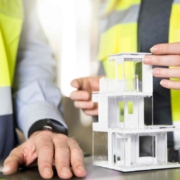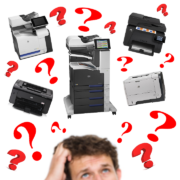8 Ways IoT Devices Can Improve Your Business Office
The Internet of Things, or IoT, is a growing infrastructure of internet-enabled objects ranging from vacuums to light bulbs, all aimed at increasing control, automation and even data collection. IoT can be a huge benefit for a business office when used appropriately. Looking for ideas? Try these.
1. Track maintenance with IoT printers.
Many offices are already used to internet-connected printers, but a new generation of smart alternatives is hitting the market that allow more than network printing. They monitor their paper and ink and can warn a support person when they’re getting low. They can also connect to inventory systems to know how much spare ink or paper they have on hand and can even make orders for more without human involvement. Never wait for a new toner cartridge to be delivered again.
2. Enable intelligent lighting with smart bulbs.
Intelligent lighting can be used in a few different ways to improve a business office. Simple smart bulbs like the white Philips Hue can learn user schedules and replace motion sensors. More flexible multicolored bulbs like those from Sengled or LIFX can be set to adjust brightness and color balance throughout the day, as well as help minimize eye strain, stress and discomfort. The initial buy-in can be expensive, but these LED bulbs last a long time and often have good warranties.
3. Use smart assistants for office awareness.
Smart assistants like Alexa or Cortana can be great for personal-level management, but they lack some features for business-level organization. That’s why there are higher-level systems like Amazon’s Alexa for Business that can sync up with a whole office of IoT devices to provide everything from weather reports to meeting tracking to all manner of custom settings. It’s like having Tony Stark’s JARVIS ready to manage your office on demand.
4. Replace custodians with smart vacuums.
Custodial staff vary from a barely noticed but essential service to a disruption to a security hole, depending on the company you’re hiring. They can also be quite expensive. Your office can save some money and maintain cleanliness with a robotic vacuum or two from a company like Eufy or Roomba to pick up the slack. Bring in the custodians for a monthly deep clean and leave the rest to the robots. Don’t worry; through the power of IoT, they can even tell you when they need to be emptied.
5. Save on climate control with smart thermostats.
Smart thermostats are one of the first major IoT devices to make headway in personal use, but they can also be used for business offices to dynamically adjust temperature and keep everyone comfortable, as well as link into building HVAC to control different temperature zones. They can even be controlled by voice or by an assistant like Alexa or Siri. You have your choice between offerings from Nest, Ecobee, Honeywell and other brands.
6. Track equipment with IoT tagging.
Asset management can be the bane of any office that isn’t Bring Your Own Device. Handing out laptops, company phones or other tools such as projectors or docks means tracking it all in a central database. Who has what, when did they check it out, where is it now? Sometimes it’s a matter of days or weeks to track down an errant device. With IoT tags like the Aruba asset tracker or Atmel’s GPS trackers, you can always find your assets wherever they are.
7. Use IoT sensors to heatmap your office.
One of the more interesting modern uses for IoT devices is activity-tracking within your office. A system of connected devices like those offered by Mapiq can monitor activity in break rooms, conference rooms, hallways and on the office floor. Are there areas that are often congested or whole rooms that never get used? Find out with an office heat map, then make a floor-plan reorganization to fix these points of stress.
8. Keep productivity up with smart coffee machines.
Coffee makes the world go ’round, and that’s never more obvious than in an office. Sharing brewing duties, keeping the machine stocked and making sure the cupboards have plenty of coffee is usually a shared office task, but a connected smart coffee machine — like the ones offered by Keurig, Nespresso or Breville — can do for your caffeine intake what IoT printers do for ink. Make sure it’s never out of stock.
Finally, keep in mind that IoT devices are notoriously vulnerable to compromise. Many of them have security vulnerabilities or simply cease updating after a certain point, leaving them, and the network they connect to, open to attacks. This isn’t theoretical; it’s been happening time and again. At the very least, make sure to keep your devices updated to avoid unpatched security holes. It might also be a good idea to create a secondary network that isn’t connected to your primary business network (with different usernames and passwords, of course) to segment your IoT devices and protect the rest of your infrastructure. Remember, a light bulb getting hacked is a disruption, but a lightbulb granting access to your user data is devastating.











